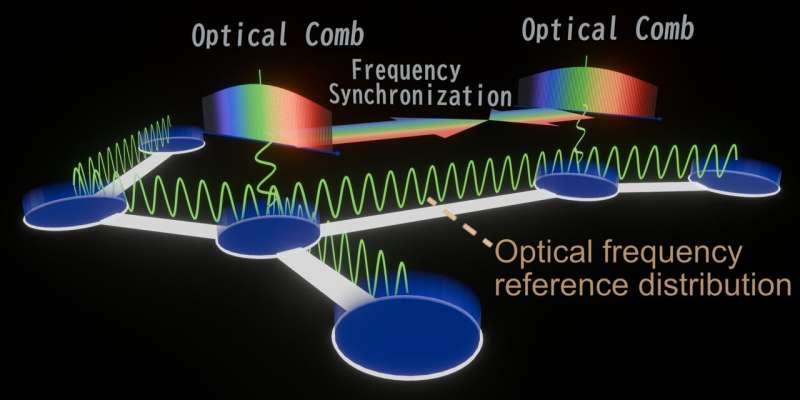
An international research team led by the Photonic Network Laboratory of the National Institute of Information and Communications Technology demonstrated a coherent optical fiber communication system with a total transmission capacity of 336 Tb/s. The system uses a single light source combined with optical comb generation and frequency reference distribution, eliminating the need for hundreds of built-in light sources within transponder modules.
This work will accelerate the commercialization of S-, C-, and L-band optical communication systems without the need for commercially available compact S-band light sources and will help to reduce the cost by simplifying the systems.
The results of this experiment were accepted as a post-deadline paper presentation at the 47th Optical Fiber Communication Conference (OFC 2024) presented by Ben Puttnam on Thursday, March 28, 2024.
To cope with increasing data traffic demands, wavelength division multiplexing (WDM) and space division multiplexing have been investigated for high-data-rate optical fiber communications. NICT has demonstrated multiband WDM transmission with a total bandwidth of 37 THz by using all the major transmission bands of standard optical fibers. However, multiband WDM in a conventional optical communication system requires hundreds of compact, frequency-stabilized light sources within transponder modules. These light sources are currently not available for the S, O, E, and U bands.

In this work, 650 sets of carrier/local oscillator pairs were generated over most of the S, C, and L bands (16 THz frequency band) through optical comb generation on the transmitter and receiver sides. Each comb line complied with the 25 GHz frequency standard of the ITU and possessed sufficiently high quality (noise characteristics) for dual-polarization 16-QAM multimode fiber coherent communications.
The team also distributed an optical frequency reference to synchronize the two separate comb units on the transmitter and receiver sides. Consequently, each carrier and corresponding local oscillator automatically had the same oscillation frequency without needing independent frequency stabilization, as is the case for conventional coherent communication systems.
The researchers used a 39-core multicore fiber with 38 cores supporting three-mode propagation and 1 core supporting single-mode propagation. One of the three-mode cores was used for data transmission and the single-mode core was used for distributing the optical frequency reference. The total transmission capacity was 336 Tb/s, which was almost 200 times greater than the data rate of the state-of-the-art commercial optical transponder module (1.6 Tb/s).
If they deployed a commercial optical communication system with the same transmission capacity using conventional methods, they would need 200 transponder modules, including independent built-in light sources over the O, E, S, C, L, and U bands (40 THz frequency band). In this demonstration, however, the researchers only needed a single light source instead.
This technology will eliminate the need for developing and implementing S-band built-in light sources and so will accelerate the commercialization of multiband WDM communication. The simple configuration (one light source) and automatic frequency locking between carriers and local oscillators will contribute to cost saving. Although they used only one of the three-mode cores in the 39-core fiber, full use of spatial channels (cores) will introduce further cost saving in optical communication systems.
Provided by
National Institute of Information and Communications Technology (NICT)
Citation:
Coherent optical fiber communication system with 336 Tb/s transmission uses single light source (2024, October 4)
retrieved 4 October 2024
from https://techxplore.com/news/2024-10-coherent-optical-fiber-communication-tbs.html
This document is subject to copyright. Apart from any fair dealing for the purpose of private study or research, no
part may be reproduced without the written permission. The content is provided for information purposes only.


